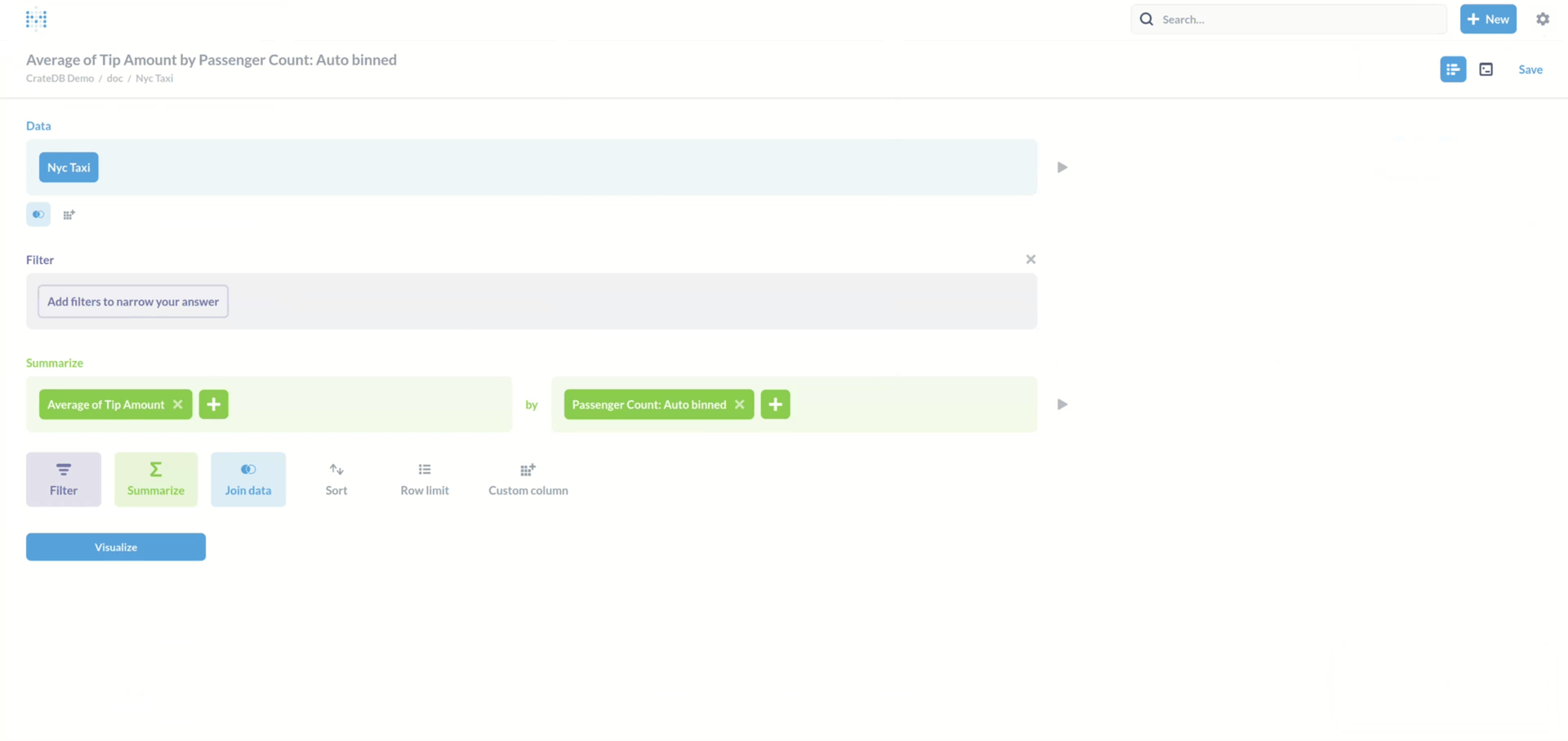Feedback
Visualize data with Metabase¶
This tutorial introduces Metabase, an ultimate data analysis and visualization tool that unlocks the full potential of your data.
Table of contents
Prerequisites¶
First, you will need a running cluster. You can use Metabase with both CrateDB Cloud and CrateDB Cloud on Kubernetes.
To use Metabase, you must have an existing data set in your CrateDB cluster. Feel free to use the sample dataset available in the Cloud Console or import your own data similarly to how it’s done in this how-to .
Initial configuration¶
Metabase offers both cloud version and local installation. Whichever you
choose, the first step will be adding your CrateDB cluster as a new database.
To do that, go to the Admin Settings -> Setup, and choose
the Add a database option.

Database configuration is relatively simple, these are the necessary fields:
Database type (PostgreSQL)
Display name
Host (the URI of your cluster)
Database name
Username
Password
Note
Make sure you also select “Use a secure connection (SSL)” option, unless your cluster is not configured for SSL.

After submitting your details, Metabase will sync with your CrateDB cluster for a few moments. When that completes, you will get a message saying, “Syncing complete”.

Questions¶
Now you are ready to visualize your data. Metabase works by asking questions.
You ask a question, and Metabase answers it in a visual form. These questions
can then be saved to form dashboards. To ask a question, go to Home and
click on New -> Question in the upper right corner. Then select the
database and a table from it.
As an example, we ask about the Average tip amount, sorted by the passenger count.

Metabase then provides a visualization of that question.

The answer that you get can be saved. When you save a question, you will also be asked if you want to add it to a dashboard. Dashboards provide an easy way to monitor your data.

Conclusion¶
This was an introductory tutorial into the data visualization tool Metabase. Metabase offers a quick and intuitive way to make sense of your data with interactive dashboards, automated reporting, and more.
If you’d like to see how the other questions were configured, feel free to check out the video tutorial on this topic.
If this integration could benefit you, feel free to head to Cloud Console and get started!